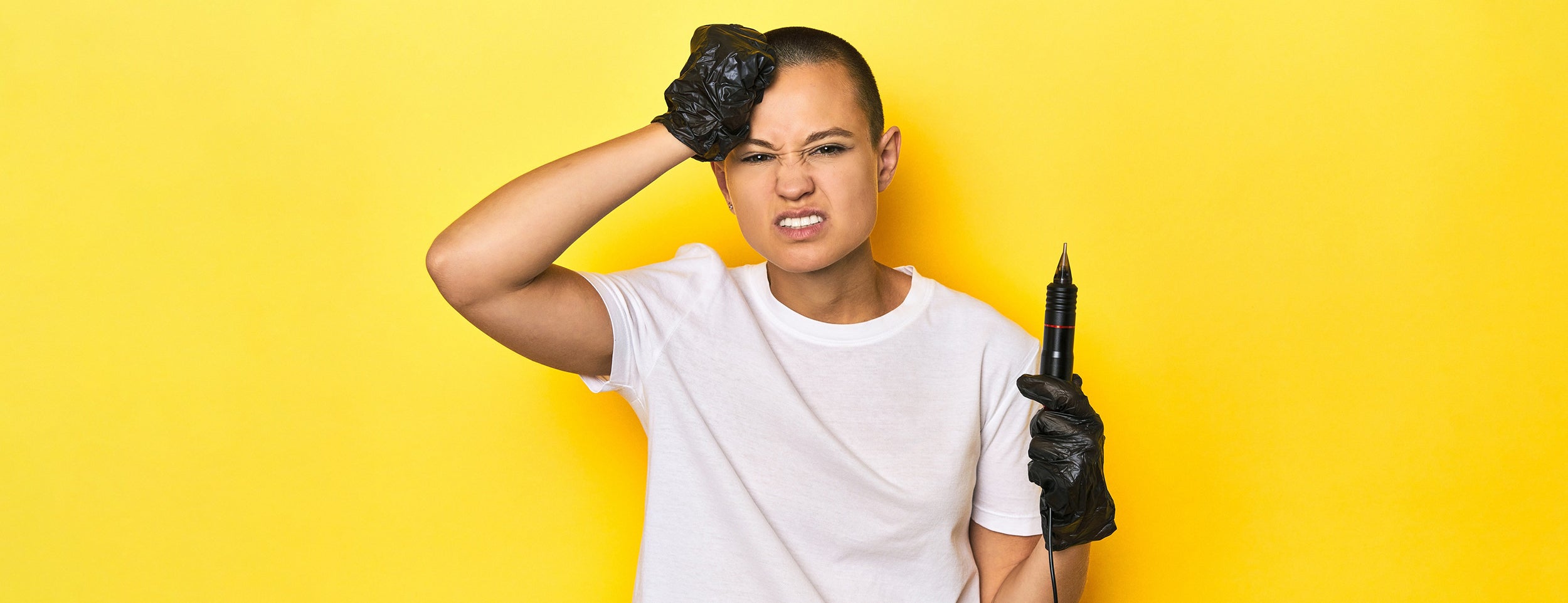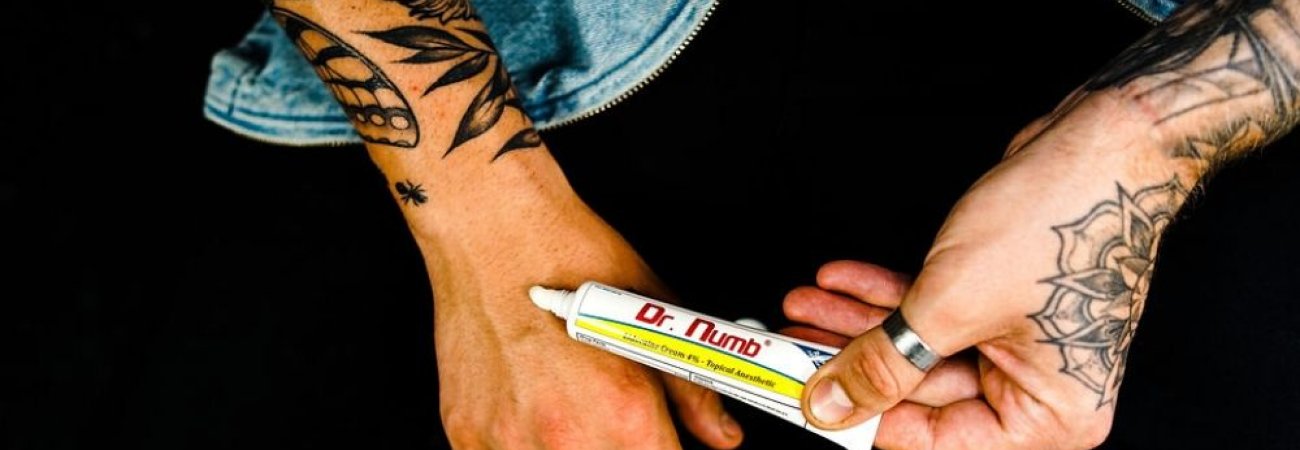Tattoo artists can make mistakes in the form of ink colors not showing up or blending correctly, improper border and shading techniques, and irreversible tattoos. Tattoo artists must ensure the environment is clean and sterile while performing the procedure to avoid infections.
Mistakes are not limited to the tattoo session itself. The healing process is equally essential and can reveal any issues that may have occurred during the session. Getting it right the first time is crucial. Even the most experienced artists can make mistakes, and the consequences of these mistakes can range from mild irritation to severe infections.
This blog post will explore various factors that can lead to tattooing mistakes. We'll discover the consequences of these mistakes and, most importantly, learn how to avoid them. Because, let's face it, no person wants a poorly executed tattoo that could cause regret, physical pain, or be financially damaging.
Can Tattoo Artists Make Mistakes: 9 Common Factors

Tattooing is a form of body art that requires a high level of technical skill and attention to detail. Even with the most experienced tattoo artists, mistakes can happen. The following factors can contribute to tattooing errors.
Human Error
Human error is one of the leading causes of tattooing mistakes. The following are some common human error factors:
- Lack of Attention: Tattoo artists must maintain a high concentration and focus throughout the process. A lapse in attention, even briefly, can result in irreversible errors.
- Fatigue from Long Hours: Even experienced tattoo artists can tire after long sessions. Fatigue can result in shaky hands or a lack of attention, leading to mistakes.
- Distraction during the Process: Tattoo artists should avoid distractions such as phone calls, social media notifications, or conversations with others during the tattooing process.
Technological Limitations
Technological limitations can also contribute to tattooing mishaps. The following are some common technical factors:
- Low-Quality Equipment: Using low-quality equipment can lead to poor-quality tattoos, resulting in uneven lines, blurred images, and other errors.
- Inadequate Lighting: Tattoo artists require adequate lighting to create detailed designs and ensure proper ink application. Poor lighting can lead to mistakes and injury.
- Poor Hygiene Practices: Inadequate sterilization and hygiene practices, such as reusing needles or equipment, increase the risk of infection and other complications.

Client Factors
Client factors can also lead to mistakes by tattoo artists. These factors can include:
- Skin Type and Texture: The texture and type of the client's skin can affect the quality and outcome of the tattoo. Skin that is scarred, thick, or too thin can make it challenging to apply ink or create detailed designs.
- Insufficient Aftercare: Aftercare is critical to ensuring the tattoo heals correctly and maintains quality. Clients not following aftercare instructions can risk damaging the tattoo or even causing an infection that may lead to necessary tattoo removal.
- Emotional Stress: Stressed or anxious clients may unwittingly move or tense up during tattooing, leading to mistakes or uneven lines.
Mistakes by Tattoo Artists: 2 Major Effects
Like any other profession, mistakes can occur, and these errors can have lasting consequences. Let's explore the various repercussions of tattooing mistakes.
Physical Consequences
Tattooing mistakes can have physical repercussions for both the client and the artist. Here are some of the physical consequences:
- Skin Irritations: Errors during tattooing, such as using low-quality ink or improper technique, can lead to skin irritations. This may manifest as redness, itching, or discomfort around the tattooed area.
- Infections: Inadequate hygiene practices or contaminated equipment can increase the risk of diseases. Infected tattoos can be painful, require medical attention, and may lead to more severe health issues.
- Scarring: Some tattooing mistakes, particularly those involving excessive depth or improper aftercare, can result in scarring. Scarring can affect the appearance of the tattoo and may be permanent.
Financial Consequences

Tattooing mistakes can also have financial implications for the artist and client. These economic consequences include:
- Legal Claims: Clients who experience severe issues due to tattooing mistakes may pursue legal action against the artist. This can lead to legal expenses and potential compensation payments.
- Repeat Treatments: Clients may need additional sessions or treatments to correct or cover up the error in cases where a mistake is made. This can be costly and time-consuming for both parties.
- Reputation Damage: Tattoo artists who make frequent mistakes or fail to address client concerns risk damaging their reputation. A tarnished reputation can result in losing clients and income over time.
Avoid Tattooing Mistakes: 9 Effective Tips
While many think mistakes are a rarity, they can and do happen. By taking a few preventative measures, you can avoid any unwanted outcomes. We will provide you with some helpful tips on preventing tattooing mistakes.
Choosing a Skilled Tattoo Artist
Choosing the right tattoo artist is essential when it comes to the outcome of your tattoo. A skilled tattoo artist will help ensure your tattoo is beautiful but also safe and long-lasting. Here are a few tips to consider when choosing a tattoo artist:
- Checking their portfolio: Take some time to review their past work, ensuring that their style aligns with what you want.
- Requiring certifications: Ask the artist about their credentials to ensure they are qualified to perform the procedure.
- Reviewing previous clients: Look online for reviews to see if the artist has a good track record.

Communicating Effectively with the Artist
One of the main reasons for tattoo mistakes is miscommunication between the client and the artist. The following tips will help you communicate effectively with your tattoo artist:
- Expressing your preferences: Communicate your preferences to the artist, including the design, placement, size, and color.
- Asking questions about the process: Be bold and ask questions about the procedure, including the equipment used, the sterilization process, and the time it will take.
- Ensuring mutual understanding: Ensure you and your tattoo artist are on the same page before the process begins.
Following Aftercare Instructions
Taking proper care of your tattoo after it's completed is as important as choosing the right artist and communicating effectively. Here are a few tips on how to follow aftercare instructions:
- Cleaning the tattooed area: Keep the site clean gently with mild soap and water.
- Applying ointments as prescribed: Apply the ointment recommended by your artist to keep the tattoo moisturized and prevent infection.
- Avoiding certain activities: Avoid swimming, sun exposure, and excessive sweating for the first few weeks after getting your tattoo.
Conclusion
To sum up, tattoo artists are not immune to making mistakes. Lack of experience, equipment failure, and client misunderstandings are the primary factors influencing errors during the tattooing process. The consequences of tattoo mistakes can range from physical scarring and infections to immense psychological distress.
The best way to avoid these mistakes is to choose the right tattoo artist with experience and excellent communication skills. So, always research before getting your next tattoo, and remember to communicate clearly with your tattoo artist.










![Antibiotics and Tattoos: 3 Risks and 3 Effects [with 4 Precautions]](http://drnumb.com/cdn/shop/articles/Can_You_Get_Tattooed_On_Antibiotics__3_Risks_and_3_Effects_4_Precautions.jpg?v=1714128292)

